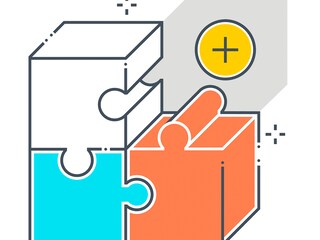Data matters: 4 workplace functions
Darden experts offer some examples of varied workplace functions on which data analytics can have massive impact


We know that data’s important. But what can we really do with it, and how much does it affect people who aren’t data analysts on the front lines? It might be overwhelming to consider from afar — yet it’s far from dismissible.
Here, Darden experts offer some examples of varied workplace functions on which data analytics can have massive impact. It serves, drives and can lead to wild (though methodically so) success in multiple and varied areas of an organization.
In a case study, Ventkatesan examined Compare.com, an insurance comparison site by the Admiral Group. After lackluster results with TV and Google Ad Words advertisements, the company experimented with email marketing, optimizing its message by varying the language, subject lines and cadence of its messages.
Next, it focused on the website itself. Noting that customers who completed a questionnaire for an insurance quote were more likely to purchase, it tested a banner ad with customers’ estimated premiums to motivate them to finish the form. The ad worked, increasing completion and click-through rates by 4 and 6 percent, respectively.
In other work, Grushka-Cockayne has analyzed how supermarkets can better plan for stocking shelves. Years ago, stockers would walk the shelves, noting what items to request from the warehouse, she says now, an ongoing camera feed provides up-to-the-minute information. “They can tell you in real time what items are missing, and may even generate an order automatically," she says.
Similar techniques are being implemented in retail stores and banking, in which tellers are fed information about customers to predict the financial product they might need next. “As managers and operation leads, we need to have a vision for the future," she says. “Data scientists have the ability to communicate between various groups, to look at the data they have and to see how we can use that data to solve business problems."
In a case study on a publicly traded biotechnology company, Lenox analyzed innovation-driven growth and how C-suite leaders could formulate a strategy by analyzing and balancing multiple factors: R&D spend, debt, equity, potentials for acquisition or liquidation, low morale/high turnover, competitors’ attempts to steal market share through PR manipulation, and time constraints in product education with sales teams, customers and the research community.
“I think you would be hard-pressed to find an industry not being impacted by data science," says Lenox. “From music subscription services to autonomous vehicles to online retail, data provides the means to create novel value for customers, improve operations and ultimately enhance profitability," he says.
Analysis can show the quickest path to profitability — as well as drive long-term value.
Though the competitive market can feel like a race to reach consumers, Parmar emphasizes the importance of thoughtful decision-making in determining how to use the vast amounts of data businesses may have at their virtual fingertips. “You have to learn about the impacts on stakeholders and empathize with them," he says. And this applies to multiple stakeholders — not only existing customers or target markets for potential business, but employees, too.
Further, data use can be about more than avoiding questionable methods: It can also be used to make decisions that actively express an organization’s values. Parmar notes Airbnb as an example though the heart of the business is a platform facilitating exchanges between groups — travelers looking for a space and homeowners willing to rent one out — to what extent should the organization intervene when the numbers showed that hosts accepted fewer guests with “distinctly African-American names"? The company responded by banning certain hosts and reviewing its own practices, in keeping with its community commitment to “accept people regardless of their race, religion, national origin, ethnicity, disability, sex, gender identity, sexual orientation or age."
First Published: Dec 07, 2021, 10:37
Subscribe Now